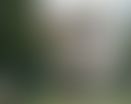In the resort of Auksta Panemune, a number of prominent Lithuanian architects of the time demonstrated their mastery of interwar design of villas, summer houses, residential houses and buildings for therapeutic purposes; the promoters of modern thought in the architectural form were Stasys Kudokas (the Kurhaus building), Roman Steikunas (the Red Cross tuberculosis sanatorium), Victor Malejinas (the Dr. Kazis Grinius Sanatorium), Kazys Dubauskas (residential house of Roze Gertiene and Zenonas and Elena Gerulaicius), Bronius Elsbergas (residential house of Colonel Boleslovas Jakutis). Many of the resort's buildings from the 1930s-1940s harmoniously blended with the cosy environment of the pakaune recreation area and, with their distinctive architectural expression, harmoniously reflected the unique character of the recreational area.
One of the more interesting, atypical interwar buildings in A. Panemune is the white-plastered brick dwelling house on Viciunu Street by the engineer Feliksas Dobkevicius. Although the author of the project is not indicated on the drawing of the building, it can be assumed that it is the work of the same engineer (some sources also mention the surname of V. Landsbergis-Zemkalnis among the possible authors of the project). The composition of the house is also very close to the work of another famous interwar architect, Feliksas Vizbars. Similarly to the villa "Eglute" designed by Bronislava and Petras Klimai, Dobkevicius's residential house is composed of asymmetrical volumes, apsidal extensions, narrow continuous windows, a third-floor extension with a vertically divided balustrade, etc. The building is also unique because of other elements of the facade (unique to it), such as the arched windows.




